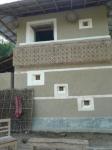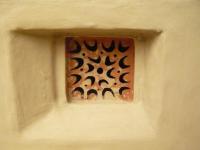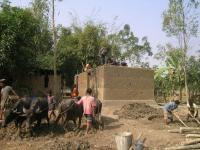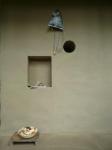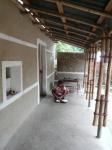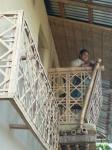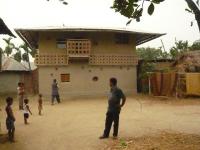in cooperation with BASEhabitat Linz, BRAC University Bangladesh and DIPSHIKHA
These three family houses are the results of a hands-on workshop for students and young architects conducted in a remote rural area of Bangladesh. Eight students of the BRAC University in Dhaka {Bangladesh} as well as five Students from the University of Art in Linz/ projectstudio BASEhabitat {Austria} came to a small and remote village in the North of Bangladsh, Rudrapur, to continue what has started with the Handmade METI-School: to work together with the local people on a model for a sustainable, modern architecture in a dynamic process. The goal of the HOMEmade project is to improve the living conditions of the local population and to strengthen national identity while maintaining the current high level of sustainability with regard to home construction. This is accomplished by building three model houses for low-income village families designed by young local architects and built by local craftsmen who have been trained in the modern mud and bamboo building techniques. It is the expectation that the young architects will be able to carry their knowledge and skills to other regions of Bangladesh and the trained labor will be able to use their skills to build other modern mud homes in the region.
Because the budget and available materials were limited, the planners were forced to concentrate on the basic needs of the clients {the villagers} and create intelligent designs that made the most of the existing resources, in some ways pushing them to new levels - both literally with two story mud buildings and figuratively with new design concepts that are accessible to the rural population. The resulting architecture reflects a pureness of form and material. In this way the mud buildings of Bangladesh might be a good metaphor for architecture as a whole, where the qualities of a great architect are not flash and fancy materials, but humility, sensitivity, and courage. Perhaps instead of focusing on creating “star architecture” and loud structures, we should endeavor to create buildings that harmonize with the environment and serve the needs of the people.
The HOMEmade project is sustainable for two main reasons: first, it is built with readily available, local, renewable resources – mud and bamboo. Second, it saves land for agriculture by building two-story buildings instead of single-story structures.
Approximately 75% of the 147 million Bangladeshis live in villages – mainly in loam or bamboo houses. Although these traditional building materials are highly sustainable, villagers have an increasing desire to build homes out of bricks, concrete, and corrugated iron sheet {CI sheet}. This trend could have a serious impact on the environment; fabrication of these materials requires a lot of energy and produces noxious emissions.
Bangladesh is one of the most densely populated countries in the world; approximately 1,045 people per square kilometer. Each year more and more agricultural land is lost to residential development. If Bangladeshis in the rural areas {about 110 million people} started living in two story structures, more land would be available for farming. This would help reduce some of the food shortage problems that the country is currently facing.
What I hope is that we’ll be able to set a trend in a fresh and regional architectural style that motivates people to bring their traditional construction methods - without the touch of being rustic - into a contemporary modern architecture. I believe that architecture - if we use it wisely - has the potentials to contribute in a significant scale to the development of Bangladesh’s ecological balance as well as it‘s economic independence and I hope we can facilitate a process of self-discovery and identification in architecture and culture
All three family houses conform to both the traditional and contemporary lifestyles of rural low-income families, but have incorporated d
2007
2008
Favorited 3 times
.jpg)
.jpg)
